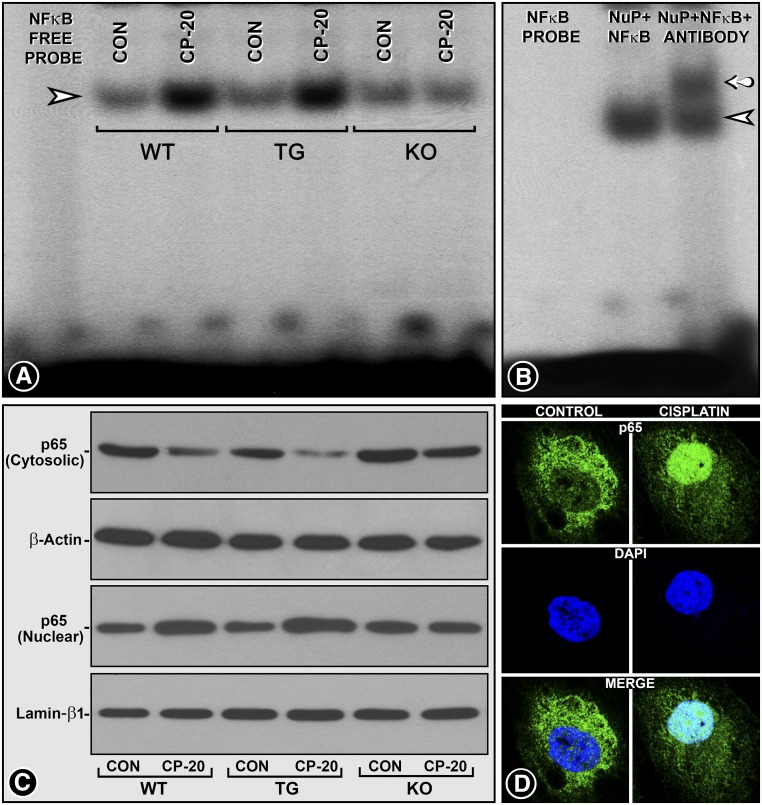Figure 7.
MIOX overexpression promotes NF-κB activation while dampened by its gene disruption in AKI. EMSA revealed an increased binding of the NF-κB–specific probe with the nuclear extracts isolated from kidneys of WT mice treated with cisplatin (A, lane 3, arrowhead). The binding was further accentuated in MIOX-TG mice, as gauged by the intensity of the band (A, lane 5). Minimal binding of NF-κB probe was observed in MIOX-KO mice receiving cisplatin (A, lane 7). The specificity of the NF-κB probe binding was confirmed by incubating renal nuclear extracts of WT mice treated with anti-p65 antibody before EMSA. An additional high molecular band indicating supershift was observed after incubation with antibody against the p65 subunit of NF-κB (B, lane 3, arrow). Subcellular compartmentalization of the transcriptional subunit of NF-κB p65 after cisplatin treatment demonstrated the activation of NF-κB. Western blot analyses revealed a translocation of p65 from the cytoplasm into the nucleus after cisplatin administration in WT mice (C, lane 2), and the translocation was further accentuated in MIOX-TG mice, whereas no significant translocation was observed in MIOX-KO mice after cisplatin treatment (C, lanes 4 and 6). The β-actin and lamin–β-1 served as controls. The cisplatin-induced p65 translocation was confirmed by in vitro experiments in HK-2 cells treated with cisplatin (D).

